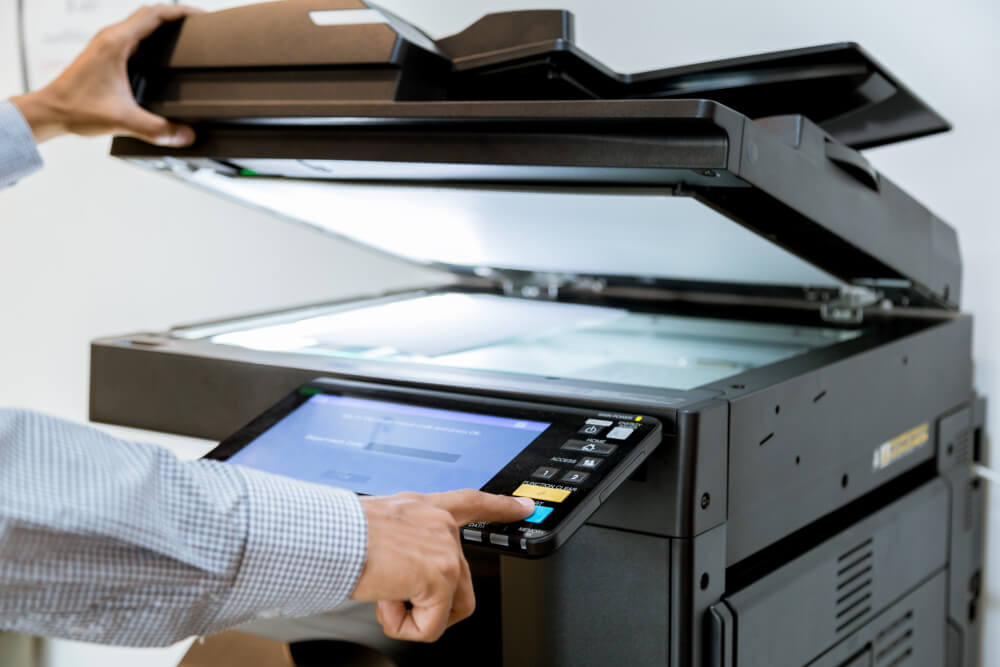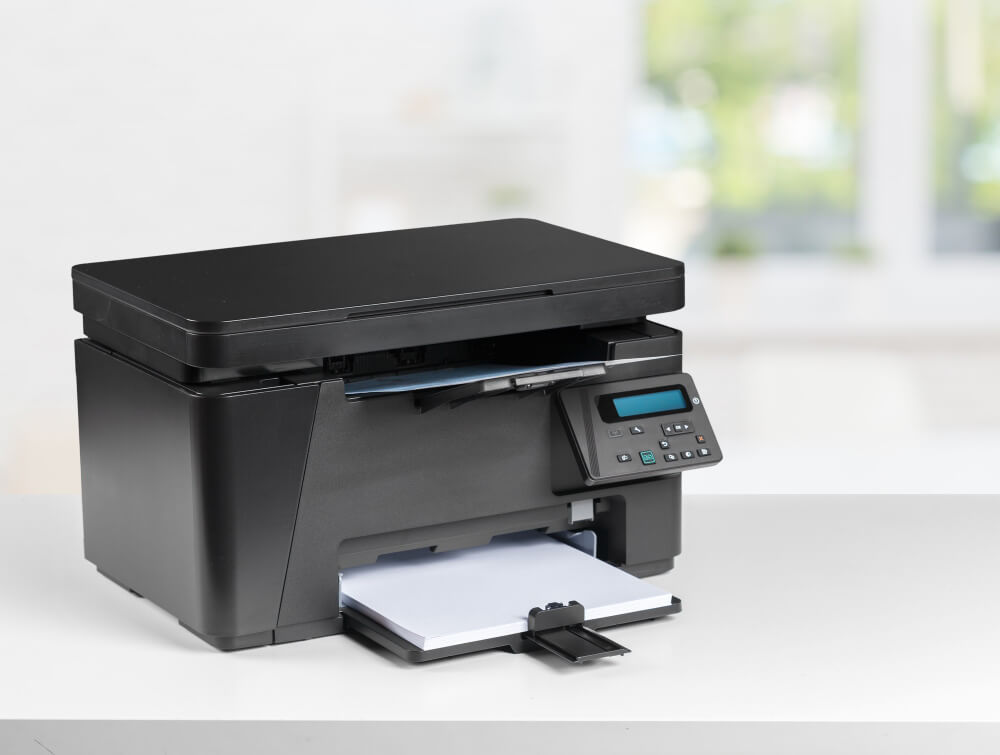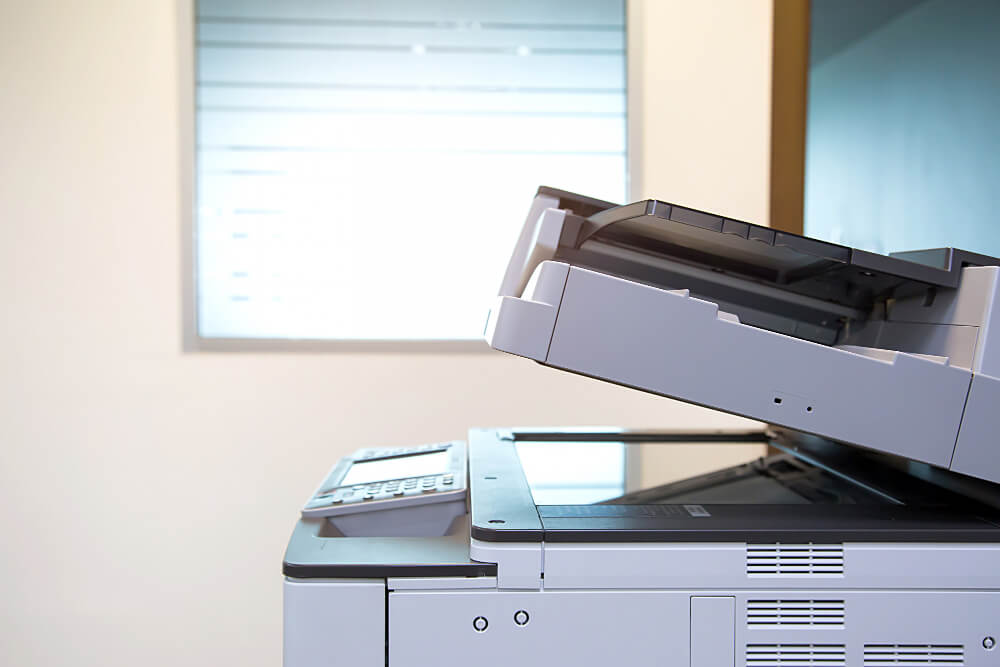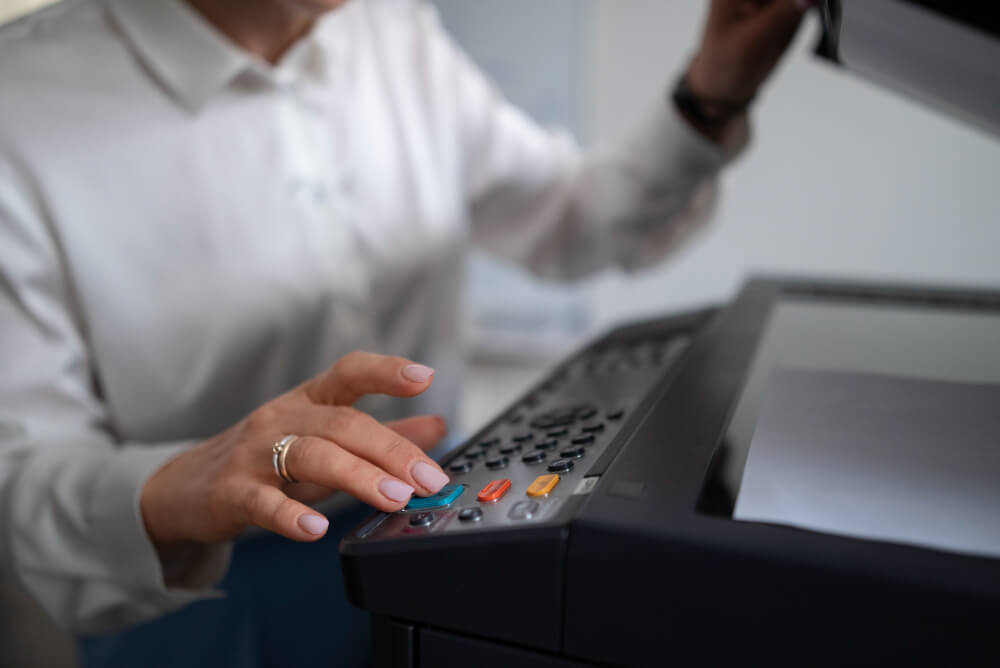
If you have a laser printer or are thinking of buying one, you should know how it functions. They’re one of the many types of printers. However, they set themselves apart from the rest through the way that they work. While they use the titular ‘laser’, there’s more to how this machine works. Interestingly, these machines use toner instead of ink to print, unlike your typical at-home inkjet.
In this blog, you’ll discover laser printing, how it works, and tips to maintain this machine.
What Is a Laser Printer?

This is a device that produces an image on paper by using a laser, a charged drum, and toner that’s fused onto the page.
In 1969, Gary Starkweather conceived the idea of this type of printer. However, it took 7 years for this thought to become a product readily available on the market.
From there, the machine grew in popularity in offices. After all, they produce crisp text and can produce many documents. Additionally, they work quickly, and their toner cartridges last longer than the ink other types of printers use.
Now, these machines connect to the computer via cable or not and can print in mono or color. Moreover, this type of machine has these parts:
- Toner Cartridge
- Image Drum
- Transfer Roller
- Laser
- Mirrors
How Does a Laser Printer Work?

When you send a document to your machine, it quickly goes through these steps:
1. Printer Receives a File
To begin the printing process, your printer receives a file to be printed. It can do so via a cable that connects the machine to your computer or through Wi-Fi. Then, it stores the data in its memory temporarily.
2. Machine Reads the Data
Once the machine has received the document, it ‘reads’ it. Through this process, the printer readies itself to interpret it into a set of instructions to transfer the information into its printed form.
3. Corona Wire Charges the Drum
After the device has read the data, it readies the 1 – 4 drums. This unit of image drums attracts the toner, which is why there can be as many four for each color: Cyan, black, yellow, and magenta. The drum needs to gain a property that will allow this powder to stick to it. That’s where the corona wire comes in. It charges the drum with a negative charge. The roller transfers an electric charge to the toner container, which gives the powder a positive charge. Since the toner is now positively charged, the negative parts of the drum will attract it.
4. Laser Transfers Data to the Drum
Now that the corona wire has used electricity to affect the drum’s charge, the laser will create an image of the document on it. More specifically, the light goes to a mirror, which then reflects the document onto the drum. Wherever the laser touches the drum, it alters the charge from positive to negative, effectively “drawing” the document onto the drum with precision.
6. Drum Attracts the Toner
Once the unit has received the laser, it can attract toner. This is a dust-like substance sold in cylindrical cartridges. However, since it’s a powder, the machine can’t spray it like inkjet printers do. Instead, it has a positive charge, which makes it want to stick to the drum where it’s ‘negative’. The toner sticks to the unit in the form of the document. That’s why you can call the drum unit a photoconductor.
7. The Rollers Fuse the Toner onto the Paper
After an image of the document has formed on the unit, the transfer belt roll will take the paper through the machine. Then, the drum will print the toner particles onto the page. Next, the rollers raise the temperature until the toner is liquid and sticks to the page. After, your document comes out of the machine.
Tips for Keeping Your Printer in Good Condition

Now that you know how a laser printer works, you might wonder how you’ll keep it in top shape. If you want your machine to stay functional for a long time, perform well, and break down less often, you need to maintain it.
Here’s how you can ensure your laser printer gives you the best quality documents for a long period:
- Clean Your Machine Regularly: Once you’ve turned off your device, you should remove debris and dust from outside and within. To clean it, you should use rubbing alcohol and a cloth that doesn’t leave behind lint. Additionally, you should use a brush, compressed air, or a vacuum to remove dust inside the printer.
- Use the Right Paper: You should use the pages your machine’s manual requires. Otherwise, your paper is more likely to jam, which causes undue stress to the printer.
- Shut It Down Correctly: When you’re done with the machine or want to clean it, you should turn it off. However, you should always use the button. Since the printer goes through a shutdown protocol that helps maintain itself and run diagnosis, you shouldn’t simply unplug it from the wall.
- Don’t Leave Your Printer Open: You might need to open your printer to dust and wipe it. However, you shouldn’t leave it open. In fact, sunlight can degrade some of your machine’s internal parts.
- Use the Appropriate Toner: Though you can use off-brand powders in your device, you should only use those designed for your printer.
- Safeguard Your Machine Environment: You should place your machine in a cool, dry, and dust-free place. That way, it’s less likely to malfunction, especially since foreign elements won’t enter the machine.
Summary
Understanding how a laser printer works can improve its efficiency and innovation in producing high-quality prints. From their inception in 1969 by Gary Starkweather to their evolution into indispensable office equipment, laser printers have set a standard for speed, efficiency, and longevity. Unlike inkjets, they use toner to print documents, offering vivid text and a higher volume of prints per cartridge. Key components like the toner cartridge, image drum, and laser play pivotal roles in transforming digital documents into physical copies. By following simple maintenance tips such as regular cleaning, using the right paper, and proper shutdown procedures, you can ensure your laser printer remains in excellent condition.
Leave a Reply